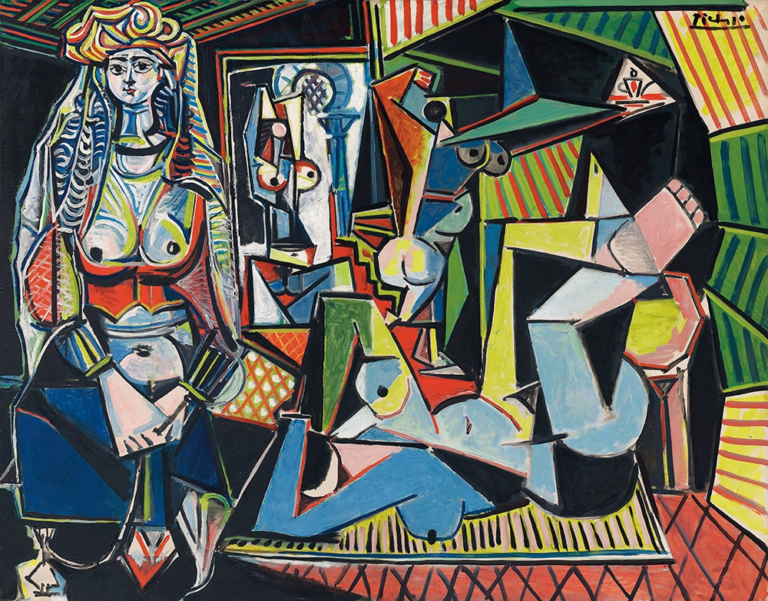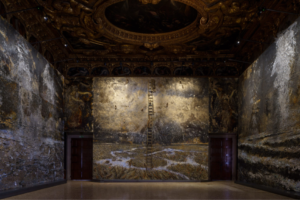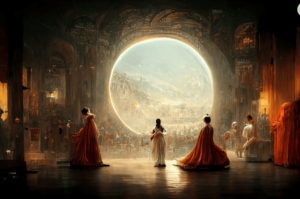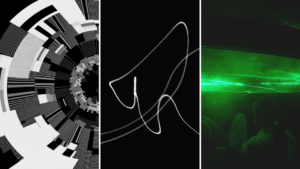Do you sign your artwork with the same signature you use on legal documents? Do you sign your work on the back of the canvas or do you hide your signature within the painting? Or do you not sign and date your artwork at all believing it’s not necessary?
It’s not uncommon for artists to not sign and date their work. Some don’t want their signature to distract from the work or ruin its aesthetic. Others don’t want to sign their work because they’re not proud of it to admit ownership yet also don’t have the heart to put it aside. And some artists may stall signing and dating their work because they’re not quite ready to consider it as completed. However, not signing and dating your art may come back to haunt you in the future. Here are reasons why you should sign and date your work:
Authenticate and protect authorship
Over its lifetime, your work may be sold multiple times. Ownership will change and it may be hung in different personal spaces, galleries, and exhibitions. What remains constant and the absolute truth is that you are the creator and author. Therefore, signing your work is a declaration of original ownership. An embedded and thoughtfully placed signature also protects the work from forgery and duplication.
Achieve a sense of completion
Declaring that you’ve completed a piece of work can be bittersweet and scary for many artists. Claiming work as finished means we shouldn’t go back in and make any more tweaks or add any more elements. It means that this is the final work that we will present to the world. And it’s for these reasons that many of us would hesitate to sign the work because adding our signature feels like the end.
Conventionally, signatures have been placed on the bottom right-hand corner of a canvas. And it’s probably because of the way we naturally scan things from left to right, starting from the top and working our way to the bottom. In a sense, a signature is like a punctuation mark at the end of a sentence. And just as we would add a period to assert the completion of a sentence, a signature serves as an identifying mark that we’ve completed the work. As scary as it is, having an identifier that the work is finished is important for your progress as an artist. It allows you to close that chapter and move on.

Collectors and curators will appreciate it
Considering the difference between a fake and a genuine painting can be thousands to millions of dollars for some artists, proving authenticity is a crucial process for collectors acquiring art. Historically, signatures have played critical roles in authenticating paintings, particularly lost works by famous artists. Signatures validate that the work was done by the artist, the person that the art buyer is championing. And as your career moves forward and up, works that have your signature become more valuable.
Tips for Signing and Dating Your Artwork
Unique but legible
What do artists like Pablo Picasso, Rembrandt, Joan Miro, Salvador Dali, Frida Kahlo, and Yayoi Kusama have in common? All of their signatures are unique and legible, making them identifiable. Graphologists have even analyzed their signatures and recognized how their handwriting characteristics emulate the artists’ personalities.
Many artists sign their name illegibly because they think making it unreadable shrouds their identity in mystery. The problem with that practice for a new and emerging artist is that it doesn’t help build your brand name. Someday you may be fortunate enough to achieve a certain level of fame that your aesthetic alone serves as your calling card. But until you do, getting your name out there, especially in this digital age, is as important as getting your work noticed.
You can use your full name, last name, or initials. You may even prefer to use an alias, Ultimately, the decision is yours and should be what feels most authentically yours. But do write your signature so that it’s readable and therefore, searchable. Even Banksy, notorious for his anonymity, signs some of his pieces with a very legible “Banksy.”

Placement
Whether you sign your work in the front or the back, remember that it may be framed at some point. And if you place your signature too close to the edge, it may end up partially or completely covered when the painting is framed. There’s also no hardened rule that you must follow conventional placement. Some artists tuck their signature in the other corners while other artists cleverly hide it within the elements of the composition. This practice is common for digital artists who know how easy it is for anyone to save an image of their artwork and crop out the signature.
Medium
Using the same medium for your signature creates continuity. Signing an oil painting with acrylic or using oil paint to sign a watercolor work increases the risk of someone wondering if the painting and the signature are by two different people. Because when a different medium is used, it raises suspicion that the signature was added much later – presumably by someone who was not the artist.
Consistency
Artists evolve throughout their careers – changing aesthetics, styles, and mediums. But while you may phase through various creative periods, it’s best to use the same signature. You’ll appreciate the commitment to stay consistent with your signature when your body of work is exhibited together and curated to share your story. Using different signatures and styles also makes it easier for forgers to claim art is yours when it isn’t; all they have to do is say that it’s signed using one of your many signatures.
Timing
We recommend signing your work as soon as you’re done for the same reason that we advise using the same medium. Adding your signature before the painting dries or before you varnish a clay pot essentially embeds the signature into the work. By timing it so, you validate that you are the creator and present before any other processes were introduced to the work, such as sealing and framing.
Color and contrast
Remember that the work is the focus and not your signature. Don’t sign your artwork using a color or intensity that steals the attention away from the composition. Avoid using colors from a contrasting palette. The signature should be visible but still complement its surroundings, almost as if it was part of the work and not an afterthought.

Dating
Dating your work is important for any artist that wants to document their evolution and dreams of seeing a retrospective of their artworks in the future.
At the start of your career, you may not feel the need to date work. With only a few pieces completed, you can probably remember what month and year you finished each one. But after many years of creating, you’ll find recalling all those dates won’t be so easy. Without dates, cataloging your work becomes challenging, especially if you want to categorize your portfolios or inventories by date or year of completion in your digital archive, such as ARTDEX. Dating your work also helps collectors and curators place your work in the context of your career and help establish a well-defined chronology of your artistic development.
It’s true that there is an ongoing debate on whether artists should date their work. However, omitting the date seems like a sales and marketing tactic, a well intentioned measure meant for the buyer to believe the work was completed during a recent or high-value time in the artist’s career.
What are your thoughts on not signing and dating your work?







